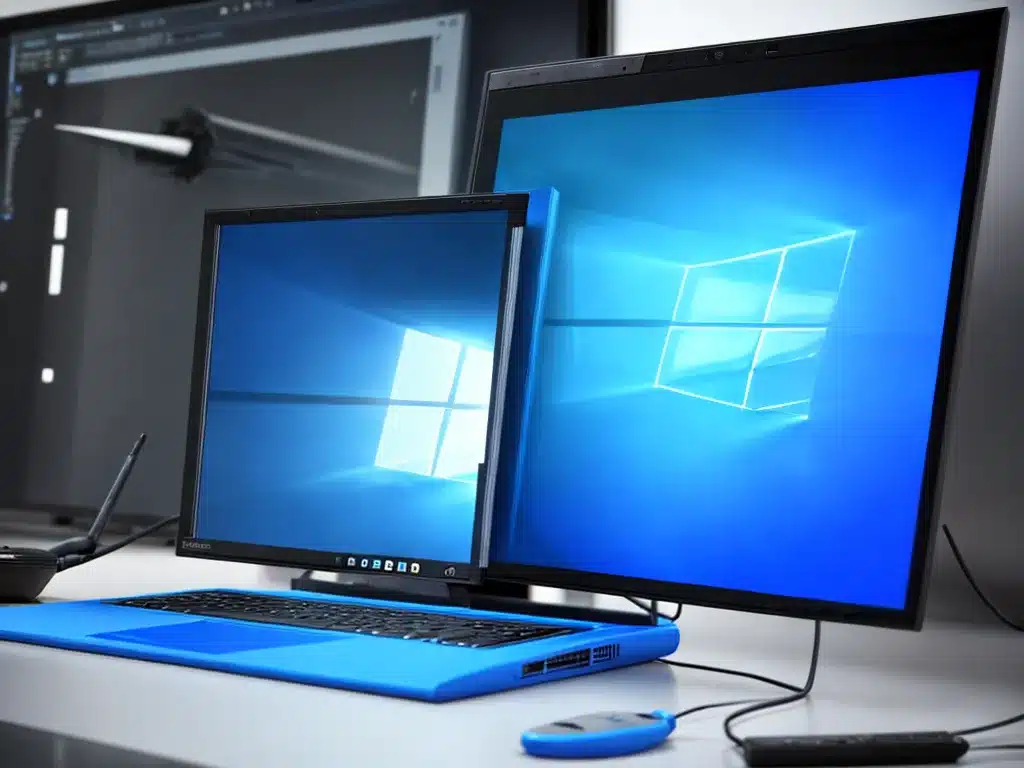
The dreaded Blue Screen of Death, also known as a BSOD or BSoD, can be frustrating when it appears on your Windows computer. However, there are several steps you can take to troubleshoot and fix many common causes of the Blue Screen of Death. With some time and effort, you can often resolve BSOD issues and get your PC running smoothly again.
What Causes the Blue Screen of Death?
The Blue Screen of Death is Windows’ way of alerting you that a serious problem has occurred that requires your immediate attention. There are many potential causes of a BSOD, including:
-
Faulty or incompatible drivers – Device drivers that are outdated, corrupted, or incompatible with other hardware/software on your system are a common source of Blue Screens.
-
Bad RAM – Faulty RAM (random access memory) modules can cause a variety of Windows crashes.
-
Overheating – Excessive heat due to poor airflow, dust buildup on components, or component failure can lead to BSODs.
-
Malware – Viruses, spyware, and other malicious software can sometimes cause Blue Screens.
-
Corrupt system files – Important Windows files that have become damaged or altered may trigger a BSOD.
-
Faulty hardware – Defective components like hard drives, video cards, and CPUs can cause crashes.
Steps to Fix the Blue Screen of Death
If you encounter the Blue Screen of Death, there are a number of things you can do to troubleshoot and fix the problem:
1. Identify the Error Code
The Blue Screen contains an error code that identifies the specific reason for the crash. Make a note of the error code and any other details displayed so you can research the issue. Common error codes include PAGE_FAULT_IN_NONPAGED_AREA, IRQL_NOT_LESS_OR_EQUAL, and KERNEL_SECURITY_CHECK_FAILURE.
2. Check Your System’s Temperature
Overheating is a common cause of BSODs. Open up your computer case and ensure all fans are running and components like the CPU and GPU are not excessively hot. Clean out any dust buildup that may be obstructing airflow.
3. Update Your Drivers
Outdated and incompatible drivers are a frequent source of Blue Screens. Update your device drivers, especially your video card, hard drive, and motherboard chipset drivers. Use a tool like Driver Booster to update drivers automatically.
4. Scan for Malware
Run a thorough malware scan using a quality antivirus program like Malwarebytes or HitmanPro to check for viruses, spyware, rootkits, or other infections that could be causing BSODs. Eliminate anything harmful that is found.
5. Test Your RAM
Use the Windows Memory Diagnostic tool or a program like Memtest86+ to check your RAM for errors. Swap in new RAM modules if issues are found.
6. Check File System for Errors
Use CHKDSK /f /r in the command prompt to scan for and repair corrupted system files or bad sectors on your hard drives that could be linked to BSODs.
7. Roll Back Recent Changes
If the Blue Screens started after you made a change to your system like installing new software or hardware, rolling back that change may fix the issue.
8. Check Minidump Files
Minidump files containing diagnostic crash data are created in C:\Windows\Minidump. Analyzing them with a debugging tool can help identify the cause.
9. Reset/Reinstall Windows
If all else fails, resetting Windows 10 or doing a clean reinstall of the operating system can eliminate any software issues causing your BSOD problems. Backup your data first!
With some troubleshooting and process of elimination, you should be able to resolve most Blue Screen of Death errors. Be patient and persistent in your repair efforts. If the BSODs still persist, the underlying problem may be faulty hardware requiring replacement.












